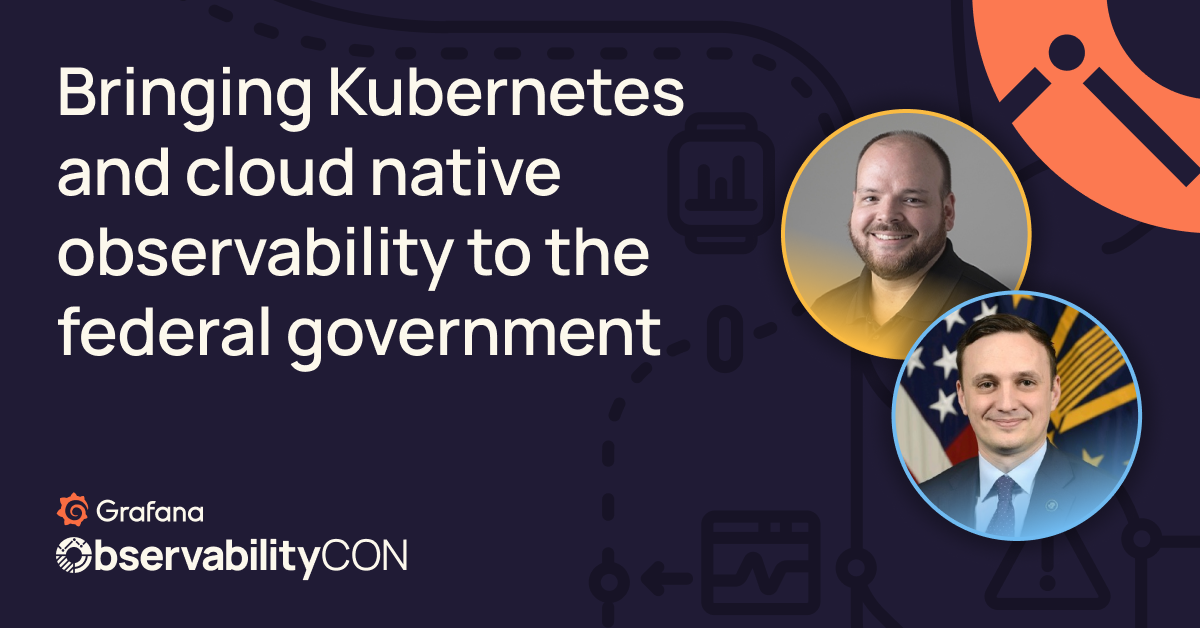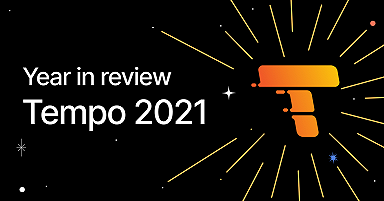
A look at how the U.S. Department of Defense deploys the Grafana stack
In September 2021, the U.S. Department of Defense’s Iron Bank formally authorized Grafana, Grafana Enterprise, and Grafana Loki, allowing the 100,000 employees and contractors who work on DoD software, both classified and unclassified, to easily select and immediately deploy Grafana Labs software without additional approvals and security certifications.
In our first-ever government session at ObservabilityCon 2021, former U.S. Air Force Chief Software Officer Nicolas Chaillan joined Grafana Labs’ VP of Global Solution Engineering Steve Mayzak to discuss the DoD’s observability journey with Grafana. In their wide-reaching conversation, they also touched on topics that ranged from edge computing to the future of AI and machine learning.

Here are just a few of the highlights:
On how the DoD deploys the Grafana stack
“We don’t just use this tech stack on business systems and clouds," said Chaillan. DoD users are also running the Grafana stack on jets and in air-gapped environments, and they collect all the telemetry they need at both a granular and global level.
“Grafana gives you the ability to aggregate and federate,” he said. “With Grafana Loki, you can decide what you can have at the edge and what you can have aggregated in a central place. Then you can add the right level of dashboards on both sides, all the way to creating customized dashboards based on persona.”
On hybrid edge computing
For commercial businesses, edge devices might be in-store terminals or beacons. For the DoD, Chaillan explained, edge devices are things like air frames, tanks, and submarines. “We have to run Kubernetes on 60-year-old jets,” said Chaillan. He explained that hybrid edge computing models provide the flexibility DoD users need to adapt to each use case. With submarines, it has to be full stack at the edge. For a jet, you can collect data at the edge and aggregate and visualize that data in a central location. “Having the ability to run some of the capabilities on smaller footprints and nontraditional CPUs is essential,” said Chaillan. Since Loki can also run in small, low-resource environments, the technology is also used under the ocean and out in the atmosphere.
On the future of AI and machine learning
As AI and machine learning capabilities mature, Chaillan and Mayzak agreed that building confidence around these technologies will be critical to success — and there’s still a lot of development ahead. At Grafana Labs, “we’ve been building this foundation of API-first for a long time in the industry now, and this is necessary to be able to automate," Mayzak explained.
And as automation becomes more ubiquitous in other industries, people will feel safer leveraging those technologies. “The better it gets, the more you trust,” pointed out Chaillan.
To close out their chat, Mayzak and Chaillan shared what they’re looking forward to in the evolution of observability. While there’s still a lot of work for organizations to do in terms of maturing their observability strategies — which will require different ways of thinking about training, staffing, and managing teams — Chaillan believes the future looks promising. “What’s exciting," said Chaillan, “is that we’re at the very beginning of the journey.”
Watch the full session to hear more on these topics, plus their discussion on the ethical implications of open source and the balancing act between monolith and microservices architectures. All our sessions from ObservabilityCON 2021 are now available on demand.



